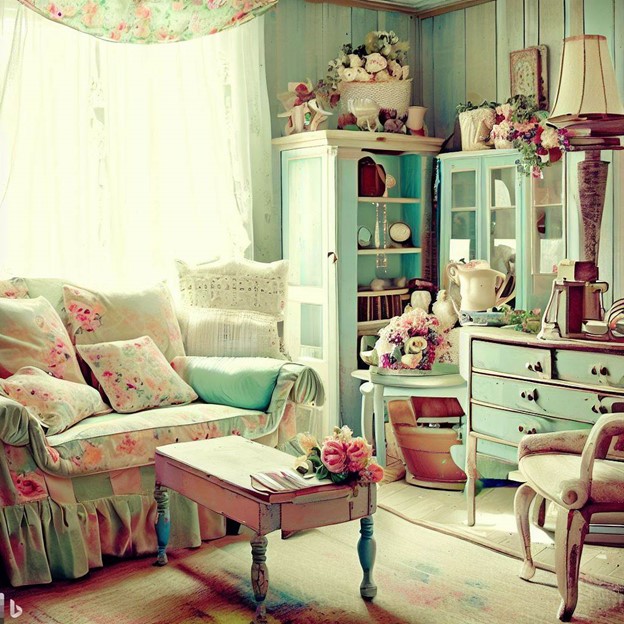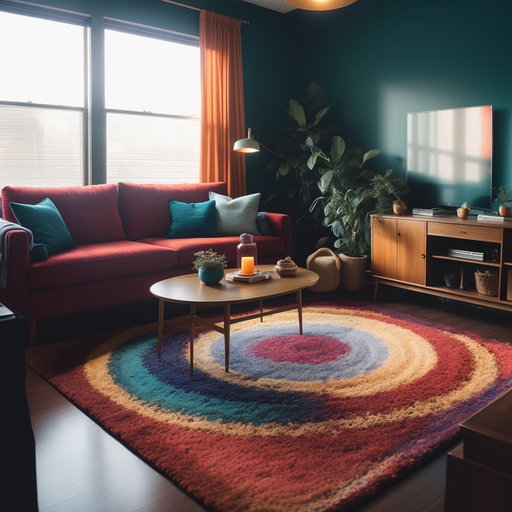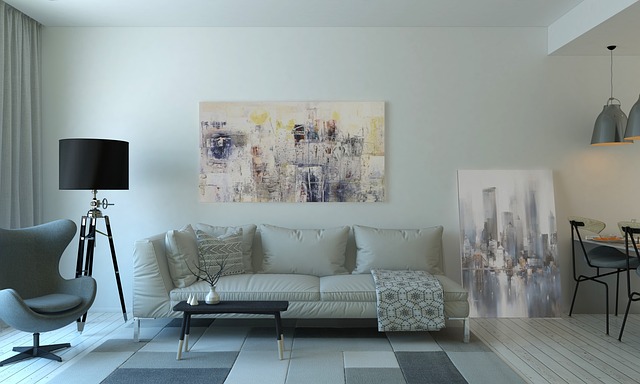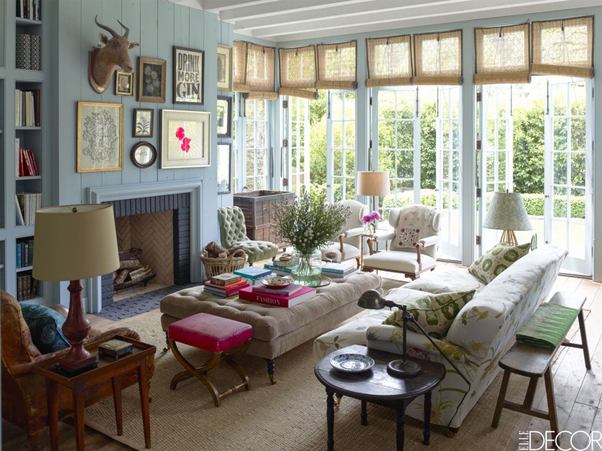The Origins and Evolution of Boho Chic Design
Boho chic design is a style of interior design that has gained popularity over the years. This design style has its roots in the Bohemian culture, which originated in France in the 19th century. Bohemians were people who rejected traditional social norms and values and lived unconventional lifestyles. The term “bohemian” was used to describe artists, writers, musicians, and other creative individuals who rejected the mainstream culture.
Boho chic design is a modern interpretation of the Bohemian style. It combines elements of the Bohemian culture with other design styles, such as vintage, eclectic, and rustic. The result is a style that is both relaxed and sophisticated, combining an eclectic mix of patterns, textures, and colors.

The origins of boho chic design can be traced back to the 1960s and 1970s when the counterculture movement was at its peak. This movement rejected the mainstream culture and embraced unconventional lifestyles. The counterculture movement was heavily influenced by Bohemian culture, and this is where boho chic design draws its inspiration from.
Boho chic design became popular in the early 2000s when the fashion industry started to embrace the Bohemian style. Designers started to incorporate elements of Bohemian culture into their collections, and this trend quickly spread to the interior design industry. Today, boho chic design is a popular interior design style that is loved by many.
The evolution of boho chic design has seen it evolve from its roots in the counterculture movement to a more refined and sophisticated style. Today, boho chic design is characterized by a mix of vintage and modern elements, natural materials, and a relaxed, eclectic vibe. It is a style that celebrates individuality, creativity, and a love for the unconventional.
Global Inspirations: How Cultures Shape Boho Chic Aesthetics
Cultural Influences on boho chic design
Boho chic design is heavily influenced by a variety of cultures from around the world. The style draws inspiration from the vibrant colors, patterns, and textures of different cultures, creating an eclectic and worldly aesthetic. Some of the cultures that have influenced boho chic design include:
Moroccan: Moroccan design is known for its intricate patterns and vibrant colors, which are often incorporated into boho chic spaces through the use of textiles, rugs, and ceramics.
Indian: Indian design is characterized by its use of bold colors, intricate patterns, and ornate details. This style is often incorporated into boho chic spaces through the use of textiles, such as colorful saris and embroidered fabrics.
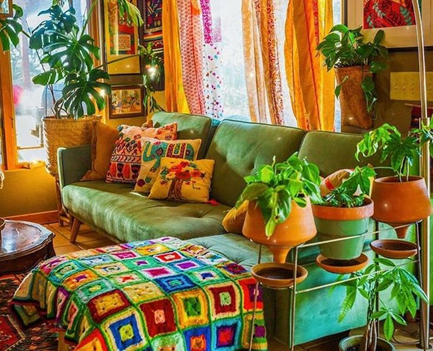
Indian Boho Chic
African: African design is known for its use of natural materials, such as wood and rattan, and its bold, graphic patterns. These elements are often incorporated into boho chic spaces through the use of woven baskets, wooden carvings, and animal prints.
Middle Eastern: Middle Eastern design is characterized by its use of intricate patterns, bold colors, and luxurious materials, such as silk and velvet. These elements are often incorporated into boho chic spaces through the use of ornate textiles, such as Persian rugs and embroidered fabrics.
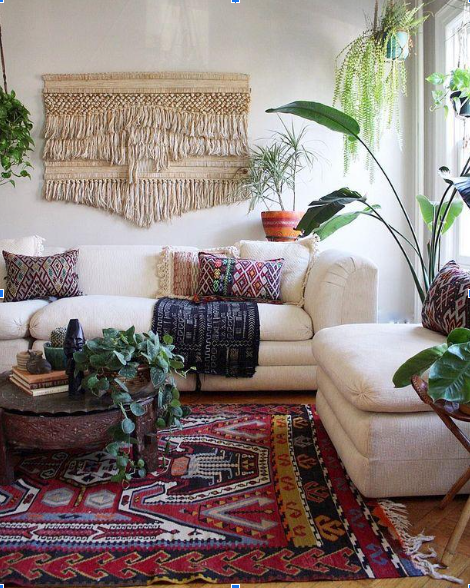
Persian rugs are key
Incorporation of cultural elements
There are many different cultural elements that can be incorporated into boho chic spaces, depending on the designer’s preference. Some examples include:
Textiles: Boho chic spaces often feature an array of colorful, patterned textiles, such as Moroccan rugs, Indian saris, and African mud cloth. These textiles can be used as curtains, throws, or cushions, adding texture and visual interest to the space.
Wall art: Boho chic spaces often feature an array of wall art, including tapestries, woven baskets, and colorful paintings. These elements can be used to add color and texture to the space, while also serving as a focal point.
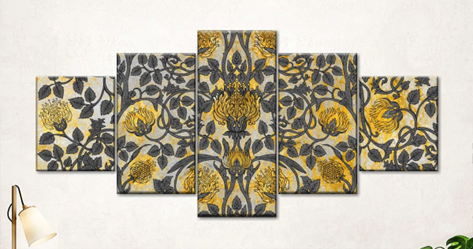
Natural materials: Boho chic spaces often feature natural materials, such as rattan, bamboo, and jute. These materials can be used for furniture, such as chairs and tables, or as decorative elements, such as woven baskets or plant holders.
Plants: Plants are an important element of boho chic design, adding a touch of greenery and life to the space. Plants can be placed in woven baskets or macrame plant hangers, adding texture and visual interest to the space.
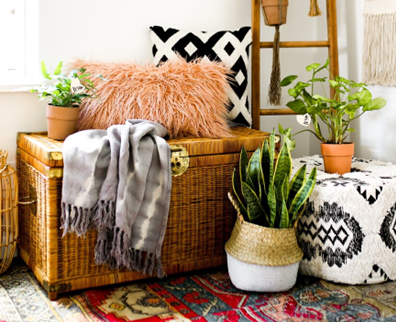
The Role of Art and Creativity in Boho Chic Design
Art and creativity play a crucial role in boho chic design. This design style celebrates individuality and self-expression, and the incorporation of art and creativity into the design is a key component of achieving this aesthetic.
One of the defining characteristics of boho chic design is the use of unique and unconventional pieces. This could include one-of-a-kind artwork, vintage furniture, or handmade textiles. The incorporation of these unique elements allows for a space that feels personalized and reflective of the owner’s personality and interests.
Artwork is a particularly important component of boho chic design. It can serve as a focal point of the space and set the tone for the overall design. Artwork can range from large, colorful paintings to small, intricate prints, and can be hung on walls or placed on surfaces throughout the space. In many cases, artwork is used to create a sense of visual interest and contrast within the design, and can be used to balance out other design elements, such as patterned textiles or bold colors.
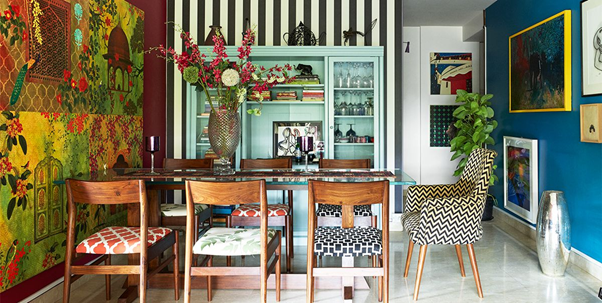
Artwork makes a different mood
Creativity is also a key component of boho chic design. This design style encourages the use of unconventional and unexpected design elements, and often incorporates handmade or DIY pieces. For example, a boho chic space might include a hand-painted mural, a bellini sofa replica, a macrame wall hanging, or a DIY woven headboard. These handmade elements add a sense of personalization and warmth to the space, and can also serve as conversation starters or focal points.
The Impact of Boho Chic on Modern Interior Design
Boho chic design has had a significant impact on modern interior design by inspiring designers to embrace a more personalized and eclectic approach. This includes the use of bold and vibrant colors, which have become increasingly popular in modern design, as well as an emphasis on texture, with designers incorporating natural materials like rattan, jute, and macrame to add depth and interest to a space. Additionally, boho chic design’s penchant for pattern mixing has become a popular trend, with designers layering different patterns and textures to create a dynamic and visually interesting look.
Boho chic design’s influence is also evident in the use of vintage and handmade elements, which add a sense of warmth and personality to a space. Designers are incorporating unique decor pieces and vintage furniture to create a more personalized look, and the popularity of DIY and handmade projects has led to a renewed appreciation for the craftsmanship and artistry that goes into creating handmade textiles, wall hangings, and other decor pieces.
Overall, boho chic design’s influence on modern interior design has led to a more diverse and individualistic approach, with designers embracing unique and unconventional elements to create spaces that are both visually interesting and reflective of their clients’ personalities and interests.

